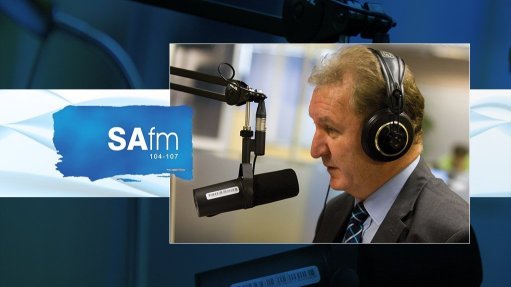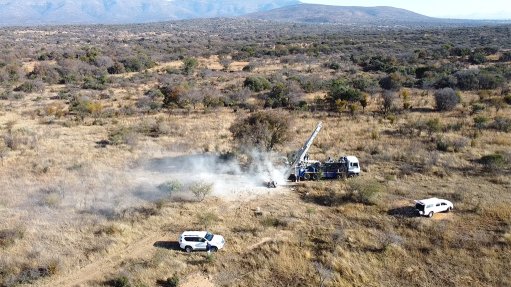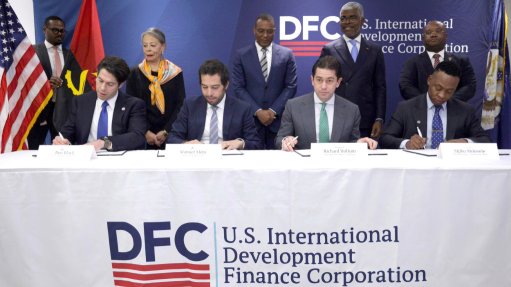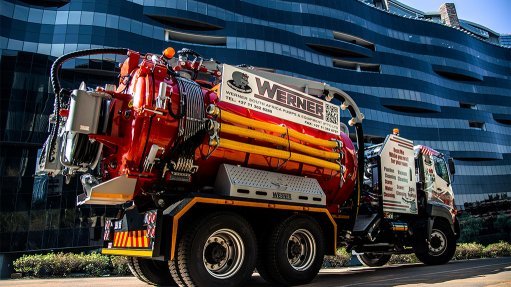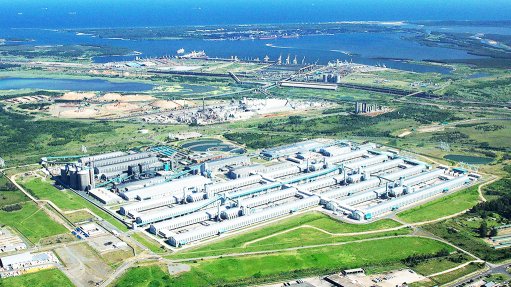Transmission investment lacking in S Africa

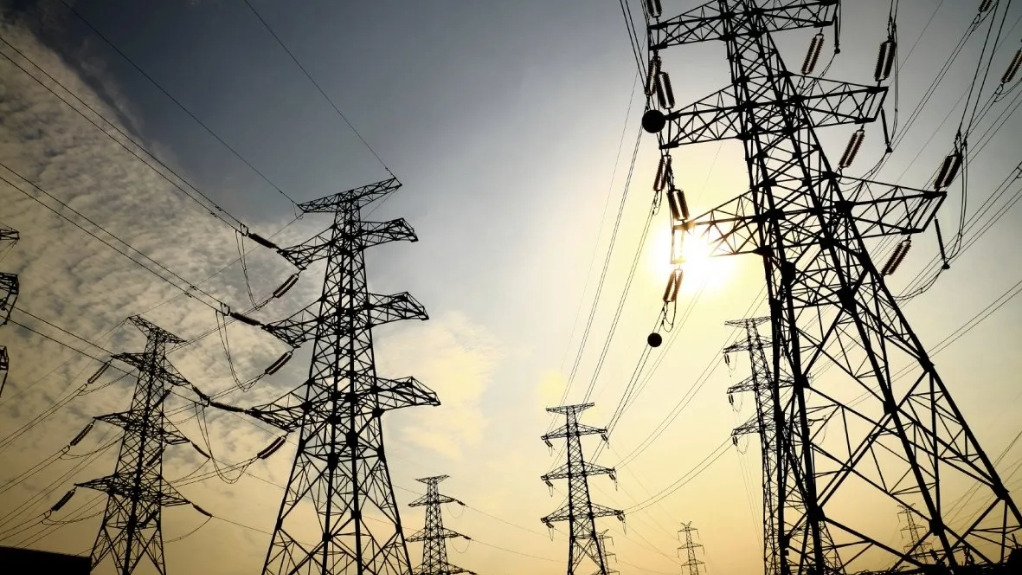
PYLON THE POWER The lack of transmission infrastructure and finance for the projects in the pipeline, is to South Africa's detriment
South Africa’s transmission network, built for a centralised, coal-based power system, cannot efficiently carry the country into a decentralised, renewables-led future, says financial solutions provider Old Mutual Alternative Investments infrastructure debt head Rolf Canto and investment analyst Kabelo Mabaso.
In a paper titled ‘Why transmission investment is the missing piece in South Africa’s energy transition’, they stress this, saying South Africa has outgrown its grid.
They explain that, as result, good projects are stranded in the Northern, Western and Eastern Cape provinces, and capital is “waiting on the sidelines” all the while the country and economy are still exposed to the risk of loadshedding.
Globally, generation has raced ahead of transmission, Canto notes, so South Africa is not unique, but he emphasises that “if we want the just energy transition (JET) to be more than a plan on paper, we must start with the physical wires”.
The specifics are stark, as over the past decade, only about 4 300 km of new lines were built against an estimated requirement of roughly 14 000 km in the next ten years.
Most of the country’s best wind and solar resources sit on the periphery, far from the major load centres in Gauteng and KwaZulu-Natal.
Meanwhile, the coal fleet is ageing as maintenance costs climb, spares become harder to source and reliability declines.
Mabaso states that new generation capacity alone cannot fix South Africa’s supply issues as, without transmission, additional megawatts are moot.
Globally, the lag between renewable-generation capacity and transmission infrastructure has emerged as a major bottleneck in the realisation of the energy transition.
“Without significant investment in transmission infrastructure, renewable-generation capacity remains stranded, limiting its ability to effectively contribute to the grid,” Canto and Mabaso point out.
They aver that transmission is not a supporting actor; it is the critical path. “Until we unlock investment into backbone lines and deep connections, we will continue to ration growth and slow the pace of decarbonisation.”
The upside is clear, with a stronger, more efficient and smarter grid unlocking more private capital for generation, enabling competition and wheeling, and lowering long-run costs for business and consumers.
A Questions of Funds
When asked where the money will come from to fund the development of transmission projects, Canto and Mabaso stress that it cannot come from the fiscus alone. The scale – in the order of hundreds of billions of rands – demands a financing model that mobilises private capital at pace and at scale.
The amount of investment required for South Africa is immense, estimated at about R440-billion over the next decade.
Consequently, this infrastructure will require a significant amount of financing in the form of long-dated infrastructure debt, such as project finance loans.
Such debt instruments play an important role in that they allow projects to repay large capital outlays over an extended period, of up to 20 years or more, assisting greatly in easing the burden on the economy and consumers, as the cost is effectively spread over a long time.
Canto and Mabaso assert that policy must improve too. They note that enabling policy that facilitates adherence to a transparent, standardised and predictable procurement process will attract serious bidders and lower the cost of capital.
Such policies paired with faster land access and servitudes, time-bound permitting and clear curtailment rules, will ensure that the development risk becomes financeable at scale.
Price Implications
Over time, Canto and Mabaso note, system costs will fall because increased transparency, competitive public procurement programmes and better use of high-capacity corridors will result in cheaper delivered energy.
“That is exactly what mature markets have experienced after opening access and investing in the grid,” they state.
Fortunately, South Africa is not starting from zero.
“The unbundling of the National Trans-mission Company of South Africa clarifies roles; Nersa remains custodian of codes and market conduct. Private developers are already funding transmission infrastructure under self-build arrangements. And the capital base is here: domestic lenders, development financiers, institutional investors and infrastructure debt funds with deep experience in project-financed assets.”
They add that “experience matters’, noting that, since the Renewable Energy Independent Power Producer Procurement Programme’s Bid Window 1, Old Mutual’s teams have financed more than 3 GW of renewable generation and, in 2024 alone, helped avoid 9.27-million tonnes of CO2-equivalent.
“That track record is not a vanity metric; it’s a capability signal,” they emphasise, adding that it proves that the company understands the South African electricity market’s evolution towards an open, competitive wholesale model.
They note that a programme of well-structured transmission investment would further this evolution by unlocking a multi-gigawatt pipeline of private generation, thereby stabilising prices for industry, creating high-quality jobs across engineering, manufacturing and construction and anchoring South Africa’s JET in real assets that deliver inclusive growth.
“The call to action is simple, [South Africa] needs to prioritise the grid, launch public procurement programmes for transmission infrastructure on bankable terms and realign tariffs to be cost-reflective. [It] also need[s] to focus on accelerating land and permitting as well as mobilise long-term financing such as infrastructure debt.”
They affirm that, if the country does this, it can turn a constraint into a catalyst, and transmission will become the backbone of a modern energy economy. “Build the grid, and everything else will follow,” they conclude.
Article Enquiry
Email Article
Save Article
Feedback
To advertise email advertising@creamermedia.co.za or click here
Press Office
Announcements
What's On
Subscribe to improve your user experience...
Option 1 (equivalent of R125 a month):
Receive a weekly copy of Creamer Media's Engineering News & Mining Weekly magazine
(print copy for those in South Africa and e-magazine for those outside of South Africa)
Receive daily email newsletters
Access to full search results
Access archive of magazine back copies
Access to Projects in Progress
Access to ONE Research Report of your choice in PDF format
Option 2 (equivalent of R375 a month):
All benefits from Option 1
PLUS
Access to Creamer Media's Research Channel Africa for ALL Research Reports, in PDF format, on various industrial and mining sectors
including Electricity; Water; Energy Transition; Hydrogen; Roads, Rail and Ports; Coal; Gold; Platinum; Battery Metals; etc.
Already a subscriber?
Forgotten your password?
Receive weekly copy of Creamer Media's Engineering News & Mining Weekly magazine (print copy for those in South Africa and e-magazine for those outside of South Africa)
➕
Recieve daily email newsletters
➕
Access to full search results
➕
Access archive of magazine back copies
➕
Access to Projects in Progress
➕
Access to ONE Research Report of your choice in PDF format
RESEARCH CHANNEL AFRICA
R4500 (equivalent of R375 a month)
SUBSCRIBEAll benefits from Option 1
➕
Access to Creamer Media's Research Channel Africa for ALL Research Reports on various industrial and mining sectors, in PDF format, including on:
Electricity
➕
Water
➕
Energy Transition
➕
Hydrogen
➕
Roads, Rail and Ports
➕
Coal
➕
Gold
➕
Platinum
➕
Battery Metals
➕
etc.
Receive all benefits from Option 1 or Option 2 delivered to numerous people at your company
➕
Multiple User names and Passwords for simultaneous log-ins
➕
Intranet integration access to all in your organisation







